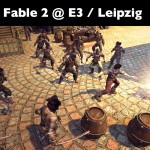As President Obama recognized in his Open Government Directive, transparency is only the first step towards a more vibrant democracy. The bigger problem has always been fostering widespread participation. After all, one of the most vexing problems facing today’s government – regulatory capture of an agency by special interests – flourishes despite, or perhaps even because of, the openness of the administrative state. The rulemaking process is open to the citizenry, but the public just doesn’t care – at least not to the degree of special interests.
The response from civic society is to proliferate an alphabet soup of their own special interest groups, from the AARP to the NRA. These organizations serve two vital functions: (1) developing expertise and (2) aggregating collective interest, primarily through membership dues (money) as a proxy.
We’ve reached the limits of this corporate, civil-society-as-special-interest, system. New, digitally networked communities suggest a more fluid and inclusive model of public participation. And, I argue, video games are worth studying for their ability to help us overcome the twin problems of expertise and collective action.
Continue reading



 It featured minimal graphics, no sound effects, and deeply flawed gameplay. Yet one of the most important game titles of 2008 was played by thousands and helped change the face of American politics. I’m writing about
It featured minimal graphics, no sound effects, and deeply flawed gameplay. Yet one of the most important game titles of 2008 was played by thousands and helped change the face of American politics. I’m writing about